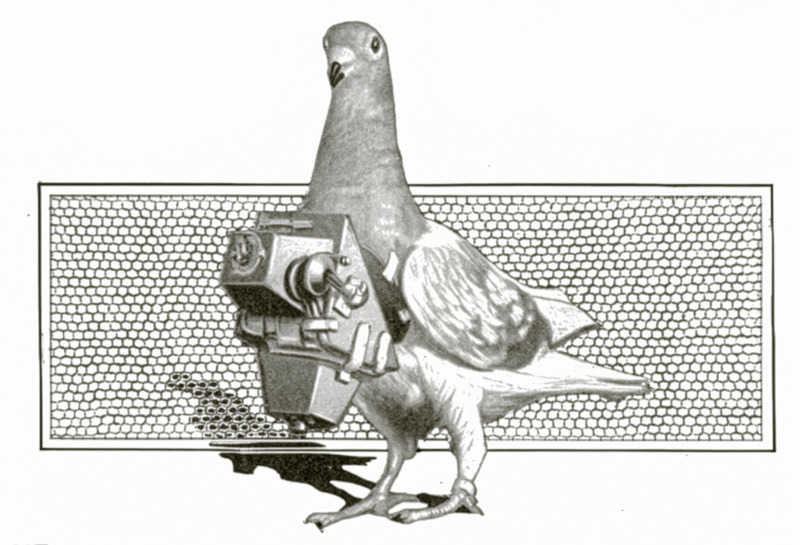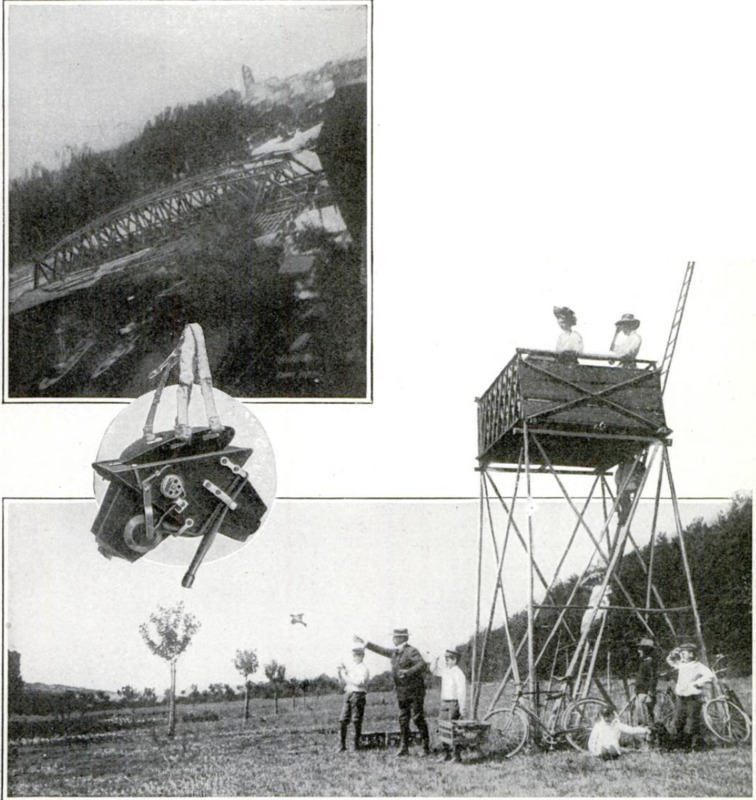The Pigeon Spy
Contenuto
-
Titolo
-
The Pigeon Spy
-
Article Title and/or Image Caption
-
The Pigeon Spy and His Work in War. How a German apothecary filled Prescriptions by carrier Pigeons and how his son invented a camera whereby pigeons could make photographs for the German army
-
extracted text
-
ONE of the strangest phenomena of the war has been the revival during its course of methods and implements used in the warfares of medieval times and even of antiquity. We hear of slings and catapults for firing explosive bombs a short distance, of arrows shot from aeroplanes, of helmets, breastplates, and shields for the protection of the soldiers. Now, last of all, comes word that pigeons, the carriers of intelligence in times of stress in remote times, are used as photographers of the positions of the enemy. It is a strange medley, the air-ship, the last and most daring invention of man’s brain, rising in the early dawn to search out and photograph the foe’s movements, and the graceful pigeon, so frequently mentioned in the stories of early days, soaring, perhaps at the same moment, to act as an aerial scout.
But modern ingenuity has added something to the older roles of the carrier pigeon—and has turned him into a photographer. The only authenticated reports of this use have been found in accounts of a German invention, some of the pigeons having been brought down behind the allied lines. Whether the Allies have tried the same means of getting photographs of German entrenchments and troops is a matter of conjecture.
The story of this development of the pigeon’s work goes back to 1840, and the enterprise of a German apothecary of Cronberg named Neubronner. He gave the doctors of the surrounding country pigeons by which they could send him prescriptions needed in haste. In this way the medicine was ready by the time the messenger with the other copy of the prescription arrived. In urgent cases the apothecary, himself, sent a messenger with the preparation. This ingenious sales’ service was carried on for a long while.
The apothecary’s son, Dr. Jules Neubronner, like his father, also had pigeons which he used to convey orders between his house and the sanatorium of Falkenstein, or to carry small doses of medicine, for which he had telephoned to his apothecary. One of his pigeons, a few years ago, stayed away for a month, and this led the doctor to devise a plan by which he could tell where his pigeons went when they were let loose. To this end he used a small, light photographic apparatus which could take views during a flight of about sixty-five feet a minute. The apparatus is arranged to fit the breast of a pigeon to which it is held by elastic bands that pass over the back. The shutter opens automatically at prearranged intervals and the roll of film, which moves in unison with the shutter, can take thirty photographs one and a half inches square. This allows an almost continuous registry of the principal points of view during a flight of six miles. One of the engravings shows a view taken in flight by the pigeon photographer.
The general staff of the German army heard of Dr. Neubronner’s ingenious device and investigated its adaptability for topographic reconnaissance. The method was evidently found satisfactory, for since the present war broke out many pigeon photographers have been found back of the Allied lines either killed or stunned by the explosion of shells and firing of machine guns.
The history of carrier pigeons in war goes back to the earliest times. Pliny tells us that Decimus Brutus, one of the assassins of Caesar, used pigeons, when besieged by Antony at what is now Modena, to communicate with the Consul Hirtius who was coming to his aid. The crusaders are known to have used them at the siege of Masar near Aleppo, and the medieval Sultan Noureddin of Egypt is said to have established a pigeon-post with relays of pigeons. Among the noted instances of their use in modern times is the story that the London Rothschild knew of the defeat of Napoleon at Waterloo, by means of carrier-pigeons, ahead of the English government, to his great financial benefit on the Exchange. But then, this is only one of a dozen stories of the origin of the Rothschild fortune.
-
Autore secondario
-
Julius Neubronner (inventor)
-
Lingua
-
eng
-
Data di rilascio
-
1916-01
-
pagine
-
30-31
-
Diritti
-
Public Domain (Google digitized)
-
Archived by
-
Filippo Valle
-
Alberto Bordignon (Supervisor)



